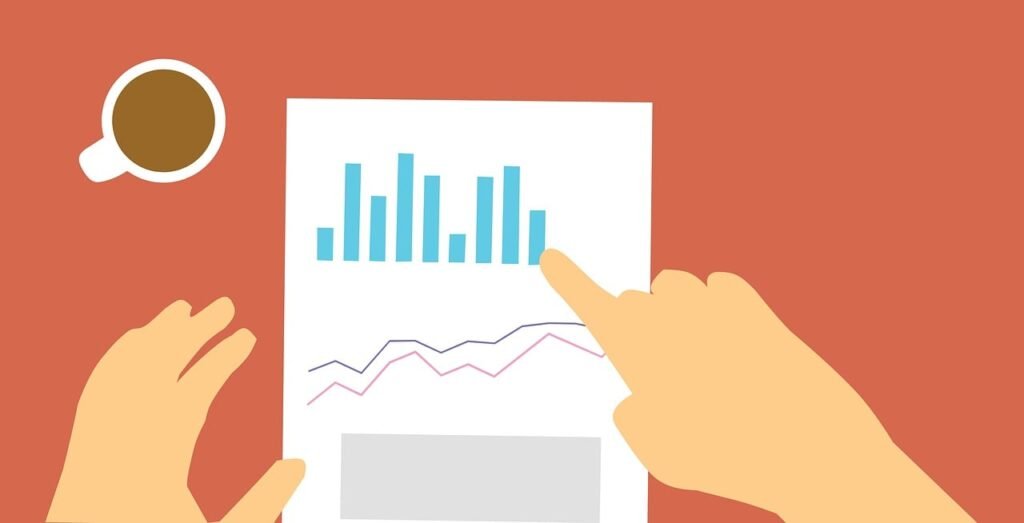What comes to mind when you think of professional liability for accountants? Is it just the numbers and compliance? In reality, professional liability insurance for accountants goes far beyond those aspects. Understanding how to protect your practice is crucial, as the accounting profession comes with its own unique set of risks and challenges.

The Evolution of Professional Liability Insurance
Over the years, professional liability insurance—commonly referred to as Errors and Omissions (E&O) insurance—has undergone significant transformations. Initially, it was primarily about safeguarding professionals against negligence claims. Today, it encompasses a broad array of risks that accountants face, from computer fraud to cybersecurity threats.
Why It Matters
The importance of professional liability insurance cannot be overstated. With the rapid changes in the financial landscape and complex regulations, having the right coverage provides peace of mind and financial protection against litigation.
Common Misconceptions About E&O Coverage
When it comes to E&O insurance, several myths often circulate. One common misconception is that professional liability insurance is only necessary for larger firms. In reality, any accountant, irrespective of size, can find themselves facing a claim.
Let’s Clear the Air
It’s also frequently thought that standard business insurance covers all professional liabilities, which isn’t true. Business insurance typically covers general liabilities, while professional liability insurance specifically addresses errors, negligence, and omissions in your professional services.
How Professional Liability Insurance Differs from General Liability
Professional liability insurance and general liability insurance serve different purposes.
Understanding the Differences
| Type of Insurance | Covers | Who Needs It |
|---|---|---|
| Professional Liability (E&O) | Claims of negligence, errors, omissions | Accountants, consultants, lawyers, healthcare providers |
| General Liability | Bodily injury, property damage | All businesses, including those without professional services |
Professional liability insurance is particularly tailored for professionals who provide specialized services, while general liability insurance is broader in scope.
The Role of Professional Liability in Business Continuity
Having professional liability insurance is crucial for maintaining business continuity. In the event of a negligence claim, the financial burden can cripple a small or medium-sized accounting practice.
Keeping Your Practice Secure
A comprehensive professional liability policy can help cover the legal costs associated with defending against claims, potentially saving you from a devastating financial hit.
How to Evaluate Your Need for Professional Liability Coverage
Determining how much professional liability insurance you need is not always straightforward. Start by assessing the specific risks associated with the services you provide.
Factors to Consider
Consider the following:
- Nature of Services: Specializing in complex projects or providing high-risk services may require higher coverage limits.
- Client Demographics: Serving larger organizations may expose you to more significant claims.
- Past Claims: Evaluate any previous claims or incidents that might influence your coverage needs.
Tailoring Liability Insurance for the Tech Industry
As technology continues to evolve, accountants serving tech companies face unique risks. From data breaches to intellectual property issues, effective liability coverage must adapt accordingly.
Key Considerations for Tech Professionals
When tailoring coverage, consider elements such as:
- Cyber Liability: Protection against data breaches and cyberattacks.
- Intellectual Property Issues: Safeguarding against claims of copyright infringement.
- Software Errors: Addressing mistakes in software or tools you may use for financial analysis.
Professional Liability Needs for Healthcare Providers
Healthcare providers, including accountants managing medical practices, face additional pressures. Errors can lead to severe consequences, not just financially, but also in the realm of patient care.
Specific Risks to Address
- Compliance Issues: Understanding and adhering to healthcare regulations.
- Data Privacy: Ensuring patient data is handled correctly.
- Malpractice Claims: Protecting against claims tied to healthcare services provided by your clients.

Insurance Challenges in the Construction Sector
The construction industry also deals with unique liability challenges. Accountants providing services to this sector need robust coverage tailored to mitigate specific risks.
Common Challenges
- Contractual Obligations: Navigating the complexities of contracts that may expose you to higher liability.
- Project Errors: Dealing with financial oversight of large construction projects that can inflate liability exposure.
Legal Professionals: Unique Insurance Considerations
If you’re working with legal professionals, knowing the peculiarities of their liability needs can better serve your clients and enhance your protection.
Notable Considerations
- Malpractice Risks: Exposure exists from any errors in legal documentation or counsel provided.
- Client Trust: Maintaining high levels of trust is essential, as any misstep can lead to serious reputational damage.
The Importance of E&O Insurance in Financial Services
Accountants involved in financial services must particularly be vigilant. Financial mismanagement carries high stakes, which is where E&O insurance becomes your safety net.
Protecting Client Interests
E&O insurance not only protects you but also strengthens your client’s trust in your services, assuring them that you take risk management seriously.
The Impact of AI on Professional Liability Policies
Artificial intelligence is changing how accounting services are delivered, and with that, it introduces new risks. Automation and reliance on algorithms can complicate liability exposure.
Embracing the Future
Accountants need to consider how their E&O policies adapt to the integration of AI, including addressing any errors stemming from automated decision-making.
Cybersecurity Threats and Their Influence on Insurance Needs
Cybersecurity has become increasingly critical due to the rise in data theft and cyberattacks. Accountants must factor this risk into their liability coverage planning.
Key Elements to Address
- Data Security Measures: Policies must include coverage for responding to data breaches.
- Cyber Liability: E&O policies should earmark funds for any potential cyber incident fallout.
How Climate Change Affects Liability Risk Assessments
Environmental factors, particularly climate change, can influence risk assessments as well. From natural disasters to regulatory changes, accountants should be aware of how these impact their liability.
Preparing for the Unexpected
Evaluate industry-specific risks that might arise from climate variability, requiring updates to your professional liability coverage.
Social Engineering: A Growing Concern for Insurers
Social engineering attacks are on the rise, targeting accountants through phishing and manipulation tactics. This type of fraud can lead to significant losses.
Preventative Measures
Implementing robust cybersecurity training and policies can mitigate these risks, but having adequate professional liability coverage ensures you’re protected against potential fallout.

Navigating the Hard Market in Professional Liability
As many industries face a hard market for insurance, understanding the environment is crucial for accountants.
Adjusting Strategies
- Coverage Limits: Be prepared to reassess and potentially increase coverage limits.
- Premium Costs: Expect fluctuations and prepare to negotiate terms with your insurer.
Lessons from High-Profile Professional Liability Lawsuits
Learning from publicized lawsuits and claims can offer valuable insights. The outcomes of such cases can provide important lessons regarding risk management and the importance of liability insurance.
Key Takeaways
- Stay informed about common claims in your field.
- Develop comprehensive risk management strategies based on these insights.
How Large Corporations Manage Their Liability Risks
Corporate giants often have specialized risk management strategies. Understanding their approaches can offer lessons for smaller accounting firms.
Insightful Strategies
- In-House Risk Management Teams: Consider establishing teams to handle liability assessments.
- Regular Training: Ensure continual education on compliance and risk mitigation strategies for all employees.
Case Study: Successful Claims Mitigation Strategies
Reviewing successful claims mitigation provides real-world examples of effective strategies in action.
Elements of Success
- Documentation: Keeping detailed records of client interactions can protect against claims.
- Regular Audits: Conducting frequent risk assessments can identify potential exposure before it leads to a claim.
The Financial Impact of Negligence Claims on Small Businesses
Negligence claims can be particularly damaging to small accounting practices. Understanding potential costs associated with such claims helps in preparing adequate coverage.
Potential Costs
Evaluate legal fees, settlements, and reputational damage in understanding the overall financial implications of negligence claims.
Real-World Examples of E&O Claims and Resolutions
Engaging with real-world examples helps illustrate the importance of E&O insurance.
Prevention and Resolution
Look for claims involving miscalculations, missed deadlines, or inadequate advice. Analyze how these claims were resolved and the importance of having effective coverage.
A Step-by-Step Guide to Filing a Professional Liability Claim
Filing a claim can be daunting, but breaking it down into steps simplifies the process. Here’s a quick overview:
Steps to Follow
- Notify Your Insurer: Report the claim as soon as possible.
- Collect Documentation: Gather information which supports your case.
- Communicate: Keep in regular contact with your insurer throughout the claims process.

How to Choose the Right E&O Policy for Your Business
Selecting the right E&O policy for your accounting practice doesn’t have to be overwhelming.
Key Questions to Address
When evaluating E&O policies, consider:
- What does the policy cover? Look for specifics on what is included.
- What are the exclusions? Understand what your policy won’t cover.
- Are the limits adequate? Ensure that limits meet your risk exposure.
Understanding Policy Limits and Deductibles in E&O Insurance
Having a grasp on policy limits and deductibles is crucial for effective coverage.
Making Informed Decisions
- Policy Limits: Know the maximum amount your insurer will cover in the event of a claim.
- Deductibles: The amount you’ll have to pay out-of-pocket before insurance kicks in can also affect your choice.
Tips for Negotiating Better Terms with Your Insurer
Securing optimal coverage requires effective negotiation with your insurance provider.
Strategies for Success
- Research the Market: Understand what is available and don’t hesitate to use this knowledge during negotiations.
- Be Transparent About Your Risks: Present a clear overview of your business’s risk profile to help the insurer better understand your coverage needs.
How to Educate Employees About Liability Risks
Fostering a culture of awareness regarding liability risks can have profound benefits for your accounting practice.
Training Matters
Implement regular training sessions and provide resources to help your employees understand their roles in mitigating liability.
Exploring Niche Markets for Professional Liability Coverage
Niche markets offer specific liability coverage designed for unique risks associated with specialized fields.
Benefits of Customization
- Standards and Regulations: Certain industries come with their own regulations, necessitating tailored coverage.
- Focused Protection: Niche policies can address your specific risks more effectively than standard liability policies.
Customizing Policies for Emerging Industries
As new industries emerge, so too do unique risks. Staying informed about these changes ensures you’re adequately protected.
How to Approach
Regularly review industry trends and adjust your coverage to suit evolving risks.
The Role of Professional Associations in Shaping Coverage Needs
Professional associations often influence liability coverage standards and requirements.
Staying Informed
Participate in industry networks and associations to stay updated on emerging trends and best practices in liability coverage.

Leveraging Industry-Specific Insights to Enhance Coverage Options
Reading reports and insights from industry thought leaders can inform decisions about your professional liability insurance.
Incorporating Insights
- Tailored Coverage: Use insights to fine-tune your policies to better mitigate unique risks associated with your practice.
- Networking Opportunities: Engage with industry professionals to understand what works best in liability insurance.
Developing Comprehensive Risk Management Plans with E&O
Creating a well-rounded risk management plan involves proactive measures for identifying and mitigating risks.
Components of Effective Plans
- Identification of Risks: Understand all potential risks relevant to your practice.
- Risk Assessment: Evaluation of impact and likelihood for each identified risk.
- Mitigation Strategies: Implementing policies and training to minimize exposure.
Professional Liability Insurance 101: A Beginner’s Guide
Navigating professional liability insurance can be confusing if you’re just getting started. Here’s a simple overview that focuses on the essentials.
Covering the Basics
Professional liability insurance protects you against claims related to negligence, errors, or omissions in your professional services, making it vital for any accounting professional.
The ABCs of Errors and Omissions (E&O) Insurance
A quick primer on E&O explains its fundamental components and why it’s crucial for accountants.
Essential Elements
- Coverage Scope: E&O insurance protects against claims of negligence in your services.
- Policy Language: Familiarize yourself with terms and conditions that define coverage.
Why Every Professional Needs Liability Coverage
Professional liability insurance is not just an option; it’s a necessity. Accountability in your profession is defined largely by how you manage risks.
Securing Peace of Mind
Having the right liability coverage provides assurance that you’re prepared to tackle unexpected challenges with confidence.
Understanding the Claims Process: What to Expect
Take a deep breath; a claims process doesn’t have to be a nightmare. Understanding the steps can mitigate anxiety.
Expect the Following
- Investigation: Your insurer will begin gathering information.
- Negotiation: This stage involves back and forth between all parties until a resolution is found.
Key Terms and Definitions in Professional Liability Insurance
Familiarizing yourself with terminology can ease your understanding of professional liability insurance.
Important Definitions
| Term | Definition |
|---|---|
| Errors and Omissions | Coverage for claims associated with negligent acts |
| Policy Limit | The maximum amount paid for a covered claim |
| Deductible | The amount paid out-of-pocket before the insurer covers a claim |
Common Exclusions in E&O Policies
Being aware of what’s not covered can save you from unpleasant surprises later.
Typical Exclusions Include
- Intentional Acts: Any deliberate misconduct is usually excluded.
- Contractual Liabilities: Claims that arise from breaches of contract may not be covered.
The Role of Risk Management in Mitigating Liability
Effective risk management is essential for minimizing exposure to liability claims.
Strategies for Success
- Continuous Training: Regularly educating your team can prevent many common pitfalls.
- Regular Reviews: Evaluate your practices and policies often to ensure ongoing compliance and risk management.
Factors Affecting Professional Liability Premiums
Understand what influences the premiums you pay for professional liability insurance.
Key Influencing Factors
- Nature of Services: The higher the perceived risk, the higher your premium may be.
- Claims History: If you’ve had previous claims, expect your premiums to reflect that risk.
Comparing Claims-Made vs. Occurrence Policies
Explore the differences between claims-made and occurrence policies, as each serves distinct needs.
Quick Overview
| Policy Type | Description |
|---|---|
| Claims-Made Policy | Covers claims made during the policy period |
| Occurrence Policy | Covers incidents occurring within the policy period, regardless of when the claim is made |
The Importance of Adequate Coverage Limits
Choosing adequate coverage limits is about more than just meeting minimum requirements—it’s vital to protecting your business.
Tailoring Coverage
Assess your accounting practice’s needs to choose limits that reflect your potential risk exposure effectively.
How to Choose the Right Deductible for Your Business
Finding the right deductible can balance your policy costs with financial risk.
Making Smart Choices
- Assess Financial Capacity: Understand how much you can comfortably pay out-of-pocket if a claim arises.
- Evaluate Risks: Consider your risk profile to select a deductible that aligns with your business situation.
The Impact of Prior Claims on Future Insurability
Having a history of claims can complicate future insurance applications and coverage.
Proactive Measures
- Maintain Clear Records: Keep comprehensive records to help dispute any claim history disputes.
- Seek Quality Coverage: Work with reputable insurers who understand your risk profile and can provide tailored solutions.
When to Review and Update Your Liability Coverage
Regularly assessing your needs is key to maintaining effective coverage.
Timing Matters
As your firm grows or changes, ensure your coverage aligns with new service offerings, capacity, or client demographics.
The Role of Brokers and Agents in the Insurance Process
Navigating the world of insurance can be simplified with the assistance of professionals.
Value Added
Brokers and agents can provide expert insight into the best coverage options tailored to fit your specific professional needs.
Tips for Communicating with Your Insurer
Building a good relationship with your insurer ensures smooth communication, especially during a claim process.
Best Practices
- Be Clear and Honest: Clearly outline your business scenario and any relevant details.
- Maintain Open Communication: Keep the lines of communication open for updates or questions during a claim.
Professional liability for accountants is a vital consideration that extends beyond mere numbers and compliance. It’s about safeguarding your practice, protecting your reputation, and ultimately ensuring peace of mind. By understanding the importance of E&O insurance and the various facets that contribute to it, you can empower yourself to make informed decisions that benefit your professional future.



